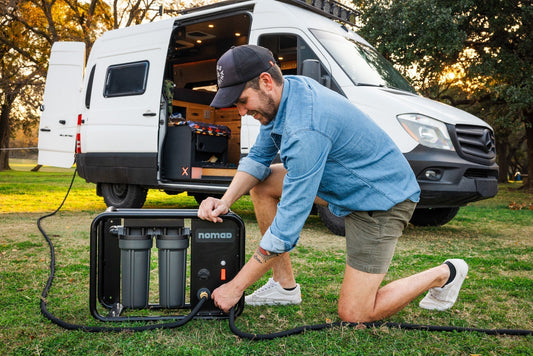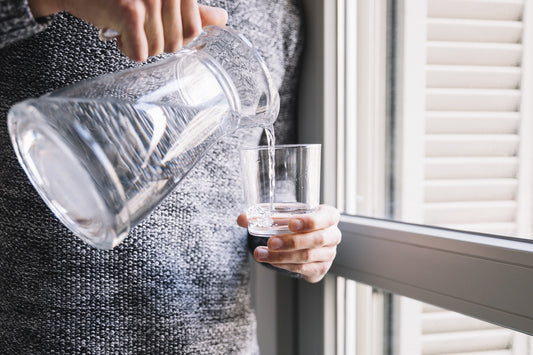Introduction to Pelican Water Filter Systems
Pelican Water Filter Systems have gained a reputation for their robust performance in purifying household water. These systems are designed to remove contaminants and sediments, ensuring that the water in your home is not only safe to drink but also pleasant to taste. Understanding the mechanics behind these systems, from their filtration methods to the components involved, is crucial for any homeowner. This knowledge not only empowers you to make informed decisions about water quality but also equips you with the skills to maintain your system effectively.
Why Regular Filter Replacement is Crucial
The importance of regular filter replacement cannot be overstated. Over time, filters in your Pelican system will accumulate sediments and contaminants, which can reduce their efficiency and potentially compromise your water quality. Regular replacement ensures that your water remains clean and safe, and it also extends the lifespan of your filtration system by preventing clogs and maintaining optimal flow rates. Think of filter replacement as a vital part of your home maintenance routine, akin to changing the oil in your car or replacing the batteries in your smoke detectors.

Image by master1305 on Freepik
Preparing for Your Filter Change
Tools and Materials Needed
Before embarking on the filter replacement process, it's essential to gather all the necessary tools and materials. You'll need a new sediment filter specific to your Pelican model, a new o-ring to ensure a tight seal, and a bucket to catch any water that may spill during the process. It's also wise to have some towels on hand for any unexpected water drips and a wrench for opening the filter housing.
Safety First: Turning Off the Water Supply
Safety should always be your top priority. Start by locating the main water supply valve to your Pelican system and turning it off. This step is crucial to prevent water from flowing through the system as you work, thereby avoiding potential spills and making the filter replacement process smoother and safer.
Step-by-Step Filter Replacement Process
Step 1: Relieving System Pressure
Once the water supply is off, relieve the pressure in the system. This can be done by opening a faucet connected to the system, preferably the nearest one. This step is crucial as it prevents water from suddenly gushing out when you open the filter housing, making the process more manageable and less messy.
Step 2: Removing the Old Filter
With the pressure relieved, use the wrench to gently twist the filter housing open. Remember, lefty-loosey, righty-tighty. Place your bucket underneath to catch any residual water. Carefully remove the old filter and dispose of it properly. This is a great time to inspect the housing for any sediment buildup or damage.
Step 3: Inspecting and Replacing the O-Ring
The o-ring is a small but crucial component. Inspect it for any signs of wear, tear, or damage. A compromised o-ring can lead to leaks and reduce the efficiency of your filter. If it looks worn out, replace it with the new one that came with your filter. If it's in good shape, ensure it's well-lubricated with food-grade silicone grease to maintain a good seal.
Step 4: Installing the New Filter
Carefully place the new filter into the housing, ensuring it sits correctly. This step is vital for the proper functioning of your system. Once the filter is in place, reattach the housing, using the wrench to tighten it. Be cautious not to over-tighten, as this can damage the housing and the o-ring.
Step 5: Re-energizing the System
With the new filter securely in place, turn the water supply back on. Go back to the faucet you opened earlier and close it. Watch for any leaks around the filter housing. If you notice any, turn off the water supply and check if the housing needs more tightening or if the o-ring is properly seated.

Image by Freepik
Troubleshooting Common Issues
Dealing with Leaks
Leaks are a common issue after replacing a filter. If you notice a leak, first ensure that the housing is tightened properly. If the leak persists, check the o-ring for proper placement and condition. Sometimes, simply reseating or replacing the o-ring can resolve the issue.
When to Seek Professional Help
If you're uncomfortable performing the replacement yourself or encounter persistent issues like leaks or water pressure problems, it's wise to seek professional help. A qualified technician can diagnose and resolve complex issues, ensuring your system operates efficiently.
Maintenance Tips for Longevity
Regular Cleaning and Inspection
Regular cleaning and inspection of your Pelican water filter system can significantly extend its lifespan and maintain its efficiency. Check for any sediment buildup and clean the housing every time you replace the filter. Also, keep an eye on the system's overall condition, looking out for any signs of wear or damage.
Scheduling Regular Replacements
To ensure your water quality remains high, it's important to schedule regular filter replacements. Depending on your water usage and quality, this might be every six months or more frequently. Mark your calendar or set reminders to stay on top of this crucial maintenance task.
The Environmental and Health Benefits of Clean Water
Impact on Health
Using a well-maintained water filter system like Pelican's ensures that you and your family have access to clean, contaminant-free water. This is crucial for your overall health, as it reduces the risk of consuming harmful chemicals and sediments. Clean water is essential for hydration, cooking, and daily hygiene, directly impacting your health and well-being.
Environmental Considerations
By maintaining your Pelican water filter system, you're also making an environmentally conscious decision. Filtered water reduces the need for bottled water, thereby decreasing plastic waste and your carbon footprint. Additionally, a well-maintained system uses water more efficiently, conserving this precious resource.

Image by Freepik
Conclusion: The Importance of Filter Maintenance
Regular maintenance of your Pelican water filter is an essential practice for any homeowner. It's not just about ensuring the quality of your water; it's about contributing to the health of your family and the environment. By following these steps and tips, you can enjoy the benefits of clean, safe water and a well-functioning filtration system for years to come.
FAQs
How often should I replace my Pelican water filter?
Typically, every six months, but this can vary based on your water usage and quality.
What are the signs that my filter needs replacing?
Reduced water flow, changes in water taste or odor, or visible sediment are common signs.
Can I replace the filter myself, or should I hire a professional?
Most homeowners can replace the filter themselves, but if you're uncomfortable, seek professional help.
What should I do if I notice a leak after replacing the filter?
Tighten the filter housing and check the o-ring for damage or misplacement. If the leak continues, seek professional help.
How do I know which replacement filter to purchase for my Pelican system?
Refer to your system's user manual or model number, visit the Pelican website, or contact their customer service for the correct filter type.
Featured Image by wayhomestudio on Freepik





